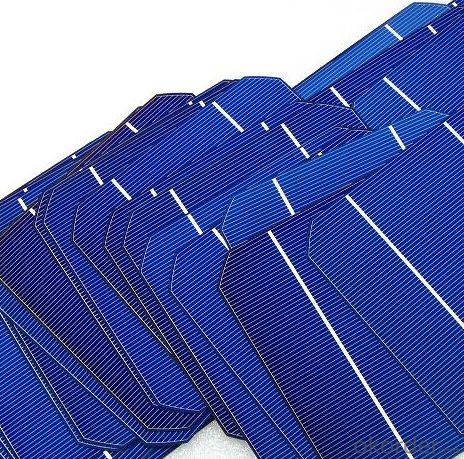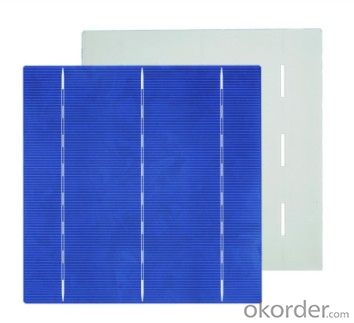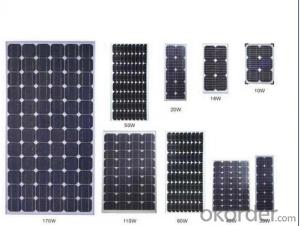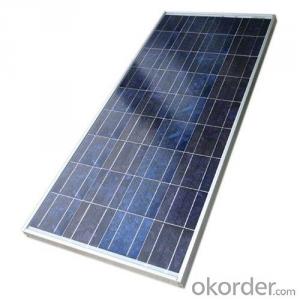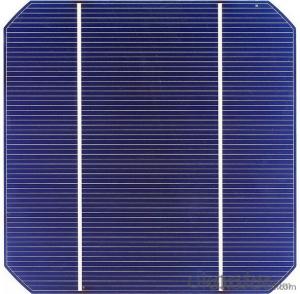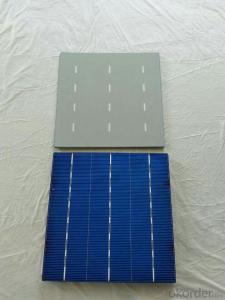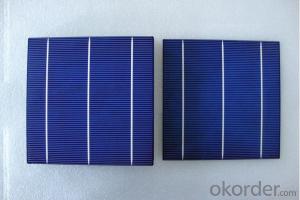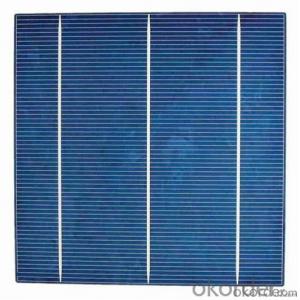3rd Generation Solar Cells:Polycrystalline Solar Cells with 3BB A-Grace17.8 Efficiency
- Loading Port:
- Shanghai
- Payment Terms:
- TT or LC
- Min Order Qty:
- 10000 watt
- Supply Capability:
- 5000000 watt/month
OKorder Service Pledge
OKorder Financial Service
You Might Also Like
Brief Introduction of Solar Cells
A solar cell, is an electrical device that converts the energy of light directly into electricity by the photovoltaic effect, which is a physical and chemical phenomenon. It is a form of photoelectric cell, defined as a device whose electrical characteristics, such as current, voltage, or resistance, vary when exposed to light. Solar cells are the building blocks of photovoltaic modules, otherwise known as solar panels.
Advantage of Polycrystalline Solar Cells
World’s Leading Manufacturer Equipment. We imported the newest and leading production equipment from abroad. Advanced equipment can guarantee the stable quality of cells. Auto production line can also save labor cost which will further cut our production cost.
Bulk supply: With the production capacity of 500MW, we can produce large quantity every month. This can satisfy most customer requirement.
Usage of Polycrystalline Solar Cells
Solar cells are often electrically connected and encapsulated as a module. Photovoltaic modules often have a sheet of glass on the front (sun up) side, allowing light to pass while protecting the semiconductor wafers from abrasion and impact due to wind-driven debris, rain, hail, etc. Solar cells are also usually connected in series in modules, creating an additive voltage. Connecting cells in parallel will yield a higher current; our solar cells have passed IEC Certification. With high and stable quality, our cells can greatly improve the performance of Solar Modules.
Factory Picture of Solar Cells
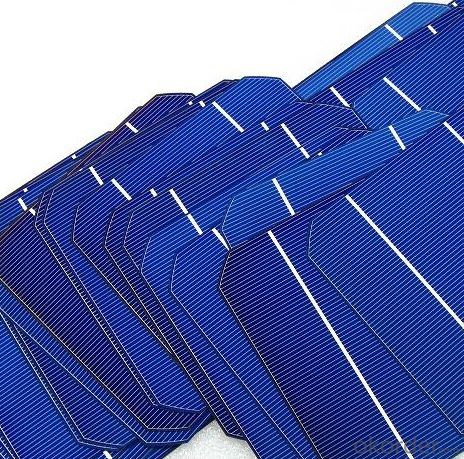
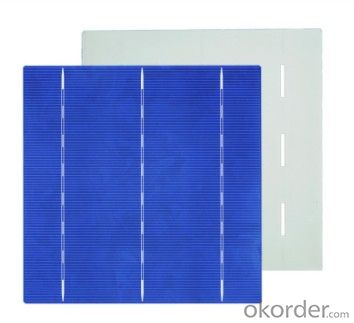

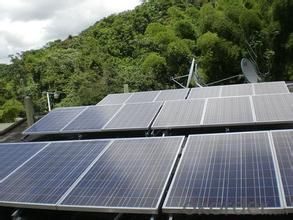
FAQ
We have organized several common questions for our clients,may help you sincerely:
What’s price per watt?
A: It’s depends on the quantity, delivery date and payment terms of the order. We can talk further about the detail price issue. Our products is high quality with lower price level.
Can you tell me the parameter of your solar cells?
We have different series of cells with different power output, both from c-si to a-si. Please take our specification sheet for your reference.
How do you pack your products?
We have rich experience on how to pack the panels to make sure the safety on shipment when it arrives at the destination.
Can you do OEM for us?
Yes, we can.
How long can we receive the product after purchase?
In the purchase of product within three working days, We will arrange the factory delivery as soon as possible. The perfect time of receiving is related to the state and position of customers. Commonly 7 to 10 working days can be served.
- Q: Can solar cells be used for disaster relief efforts?
- Yes, solar cells can be used for disaster relief efforts. They provide a reliable and sustainable source of electricity, enabling the operation of essential equipment such as medical devices, communication systems, and water purification systems in areas affected by natural disasters. Solar cells can also be easily transported and quickly deployed in emergency situations, making them an ideal solution for providing power in remote or inaccessible locations.
- Q: How do solar cells perform in areas with high levels of wildfire smoke?
- Solar cells generally perform less efficiently in areas with high levels of wildfire smoke. The smoke particles in the air can reduce the amount of sunlight reaching the solar panels, thereby decreasing their energy production. Additionally, the smoke can settle on the surface of the panels, creating a layer that further hinders the absorption of sunlight. Regular cleaning may be required to maintain optimal performance in such areas.
- Q: What is the accurate explanation for the sun solar cell power system? How does it work?
- The sun solar cell power system is actually working better than the other ways, because the quality guarantee period of crystalline silicon solar cells is 15 years, and the service life is more than 25 years.
- Q: Can solar cells be used in agriculture?
- Yes, solar cells can be used in agriculture. They can be used to power various equipment and systems in farming, such as irrigation systems, ventilation systems, and lighting for greenhouses. Solar energy can also be utilized to charge batteries for electric farm vehicles and tools, reducing reliance on fossil fuels and minimizing carbon emissions. Additionally, solar panels can be mounted on rooftops or installed as shade structures to provide shelter for livestock while generating clean energy.
- Q: Can solar cells be used in data centers?
- Yes, solar cells can be used in data centers. They can help offset the energy consumption of the data center by generating clean and renewable electricity. However, their effectiveness may depend on factors such as the size of the data center, available space for solar panel installation, and the amount of sunlight available at the location.
- Q: Which Solar Panel Type is best? Polycrystalline panel or PV Module Monocrystalline Solar cell panel, or thin film?
- PV Module Monocrystalline Solar cell panels is most efficient since they are made from the highest-grade silicon.
- Q: How do solar cells perform in high humidity environments?
- Solar cells typically perform well in high humidity environments. However, excessive moisture or prolonged exposure to water can lead to a decrease in their efficiency. It is important to ensure proper waterproofing and maintenance of the solar panels to prevent any potential damage caused by moisture.
- Q: How do solar cells perform in areas with high levels of snowfall?
- Solar cells generally do not perform optimally in areas with high levels of snowfall. The accumulation of snow on the surface of solar panels can significantly reduce their efficiency by blocking sunlight and preventing the cells from generating electricity. Regular snow removal or tilting the panels at an angle can help mitigate this issue, but it may still impact their overall performance in such regions.
- Q: Are solar cells safe for the environment?
- Yes, solar cells are safe for the environment. They generate electricity using sunlight, which is a clean and renewable energy source. Solar cells do not emit any greenhouse gases or pollutants during operation, making them an environmentally friendly energy solution. Additionally, they have a long lifespan and can be recycled, reducing their overall impact on the environment.
- Q: Can solar cells be used in public transportation?
- Yes, solar cells can be used in public transportation. They can be integrated into vehicles such as buses, trams, or trains to harness solar energy and power various onboard systems. Solar panels on the roof can generate electricity to charge batteries, power lighting and ventilation systems, or even propel the vehicle itself. This helps reduce reliance on traditional fuel sources and decreases carbon emissions, making public transportation more sustainable and environmentally friendly.
Send your message to us
3rd Generation Solar Cells:Polycrystalline Solar Cells with 3BB A-Grace17.8 Efficiency
- Loading Port:
- Shanghai
- Payment Terms:
- TT or LC
- Min Order Qty:
- 10000 watt
- Supply Capability:
- 5000000 watt/month
OKorder Service Pledge
OKorder Financial Service
Similar products
Hot products
Hot Searches
Related keywords



